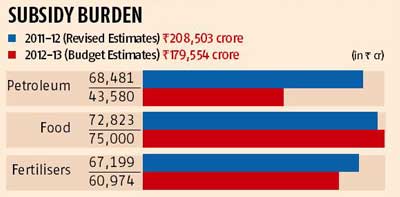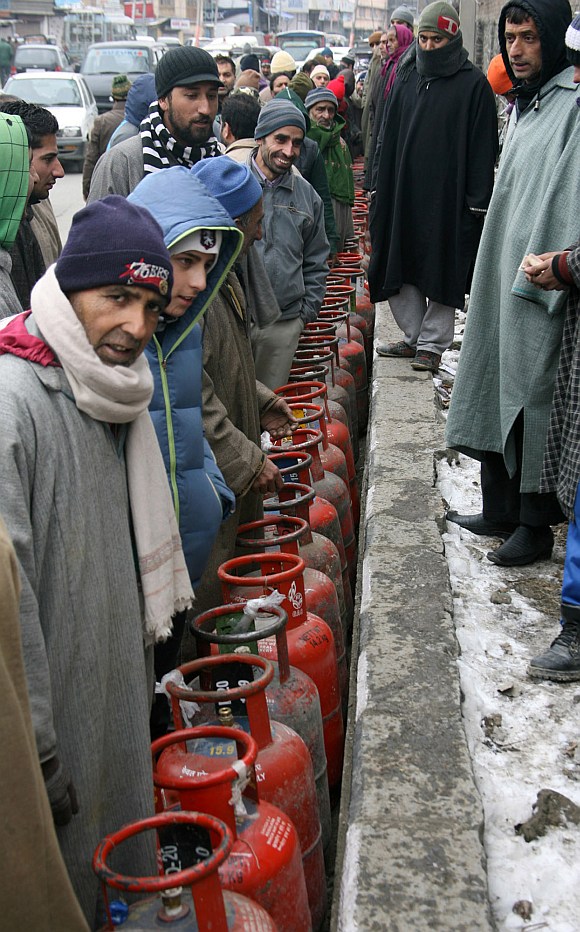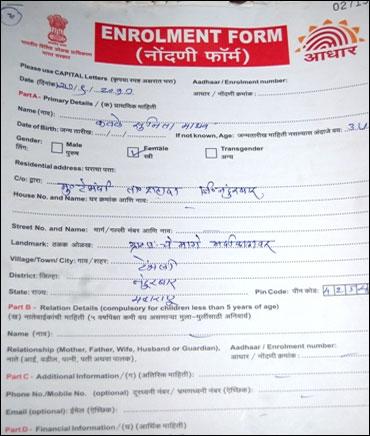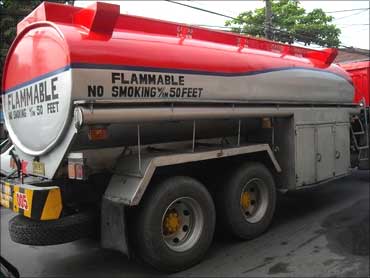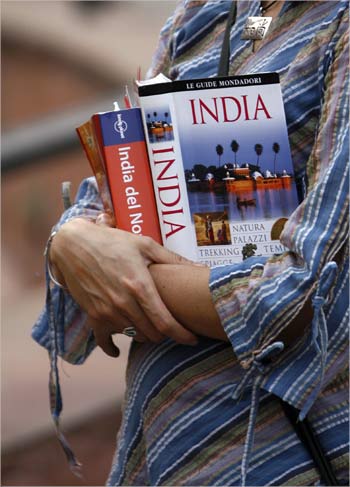 | « Back to article | Print this article |
Rajanna and the cooking gas revolution
Meet Rajanna, 48, who rolls incense sticks (aggarbattis) for a living in a small tin-roofed house at a nondescript location off Vani Vilas Road in this heritage city.
He stays with his wife and two daughters; the wife does odd jobs in the neighbourhood.
They clearly meet all the requirements for standard government subsidies such as rationed grain or subsidised gas cylinders.
Click NEXT to read further. . .
Rajanna and the cooking gas revolution
Mysore's Aadhaar run
The family stands out now.
Nine of 10 Mysoreans are enrolled for Aadhaar, the biometric-based programme to put every Indian on a central registry without an identification issue.
Rajanna and his family are on the list and are subjects for a pilot programme.
It began as a security idea, but what makes both policy makers and hard-nosed-accountants misty-eyed is its potential for actually delivering subsidy to the person it is meant for.
The subsidy, in this case, is the cooking gas cylinder.
Click NEXT to read further. . .
Rajanna and the cooking gas revolution
We know domestic cooking gas is sold at half its cost.
And, this is also a recipe for rampant rigging in the supply chain.
How does one ensure a liquefied petroleum gas cylinder meant for the poor doesn't reach another neighbourhood hotel?
Mysore, along with Pune and Hyderabad, was chosen for this pilot for the same reasons: Citizens took to the Aadhaar scheme seriously.
In Mysore, that meant nine of every 10 citizens had their individual and unique biometrics on an electronic registry.
Click NEXT to read further. . .
Rajanna and the cooking gas revolution
Three gas agencies of each of the three national oil distribution companies -- IOC, BPCL and HPCL -- were chosen, based on their record.
So far, the programme has delivered LPG to 6,000 households of the 26,000-odd enlisted in the pilot scheme.
For this, a technology developed by iGate-Patni was used.
Here's how it works.
The cylinder delivery boy carries with him something similar to a credit card swipe machine, or a point of sale terminal.
It is connected to the centralised Aadhaar server (through GPRS, the packet data service technology riding on mobiles).
When Rajanna gets the cylinder at home, he has to authenticate his finger impression on the POS machi#8800 it immediately verifies his identity with the central registry.
This allows the delivery of the cylinder, and important, to the deserved.
Click NEXT to read further. . .
Rajanna and the cooking gas revolution
The vital other part
Still to be tied in is subsidy delivery.
The technology's ready and part of the same system, the consumers, were earlier asked their Aadhaar numbers.
However, the Union government is yet to decide between two ways of routing this.
One is to get the consumer to pay the entire cost (Rs 920) of the LPG cylinder at the time of delivery: Expectedly, treasury accountants would prefer this.
As soon as the authentication is complete, wire back the subsidy portion directly into the bank account of the beneficiary from the government bank account.
The other way is to credit the subsidy amount in advance to the needy, like Rajanna, who cannot afford to pay Rs 920 upfront.
Click NEXT to read further. . .
Rajanna and the cooking gas revolution
This part of the subsidy transfer is the next phase of the experiment.
Even then, only a token transfer of, say, Rs 10, would be tried.
The point is the same: See the process through its initial paces before to regularising the entire system.
Venus Gas Services, an Indane gas distributor here, is among those chosen to implement this pilot. Laptop-totting Vinod Maroli, owner of this 40-year-old agency, says he's proud to have been chosen for this prestigious project.
He knows where the process pinches. "This is a sector where control is more than the process.
Click NEXT to read further. . .
Rajanna and the cooking gas revolution
"When you have more control, the ugly head of corruption crops up. It is compounded when the demand far outstrips the supply. Marketing? It just does not arise," he candidly notes.
He says Union government officials, the Aadhaar team and officials from IOC had interacted with them during most of last year, before launching the pilot scheme.
"Things have been moving smoothly. From the initial 15 per cent success rate, it has now risen substantially to 90 per cent," he says with satisfaction.
Ground issues
However, teething problems galore. Says Maroli: "When we visited a household, the lady of the house was kneading atta and the POS just could not read her finger impression!
Click NEXT to read further. . .
Rajanna and the cooking gas revolution
Others were curious why all these checks were required to receive an ordinary gas cylinder.
'Next time, do you want to take our blood sample when you deliver this?' asked one."
Educating the consumer on the benefits takes time and Maroli is striving hard.
"Things have been taken for granted.
"Our delivery boys say they have to spend an additional 10 minutes for a delivery.
"We are planning to incentivise them as well and use the boys to explain the benefits of such a step," says Maroli.
Click NEXT to read further. . .
Rajanna and the cooking gas revolution
He adds a few affluent consumers have just opted out, wanting no part of the extra paper work and government intrusion.
"In fact, the subsidy scheme should be multi-layered, according to the income levels," he feels.
Rajanna, however, isn't o#8800 he goes through the process every time he receives his cylinder.
"When we visited him along with a cylinder refill, the POS just would not recognise him. However, the delivery boy did.
"He also had an option to over-ride the technology and so, delivered the cylinder.
"All such cases are being referred back to the iGate-Patni team to check the reasons for failures," said Maroli.
This is essential back-end work that brings in sustained change.

